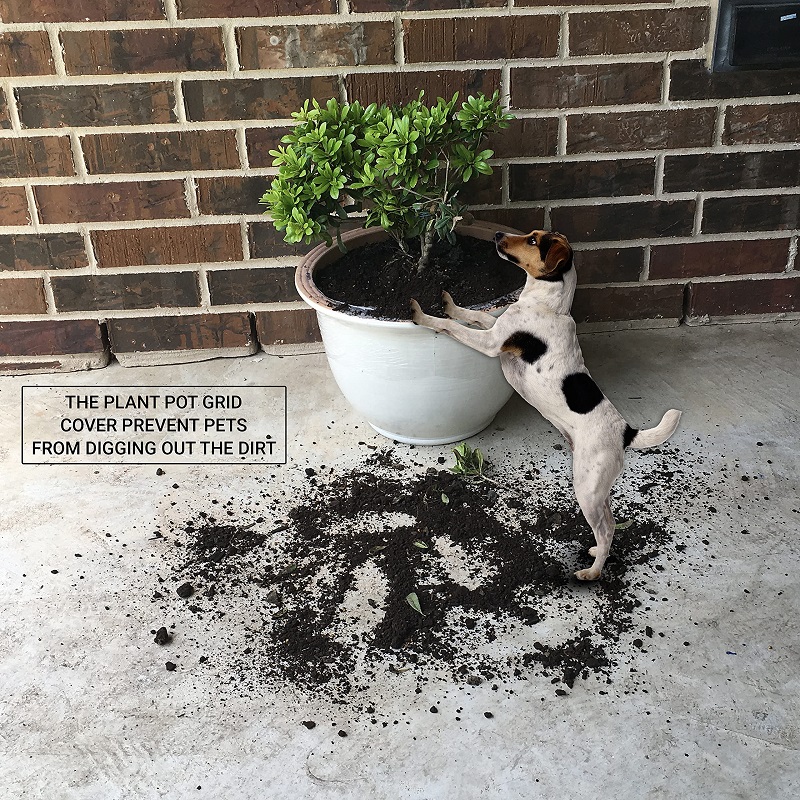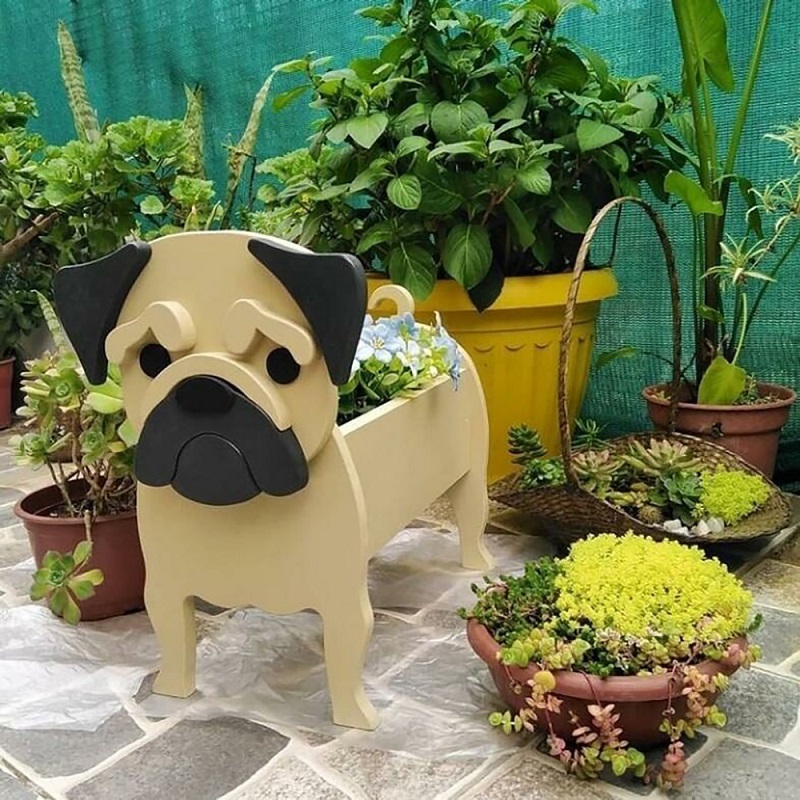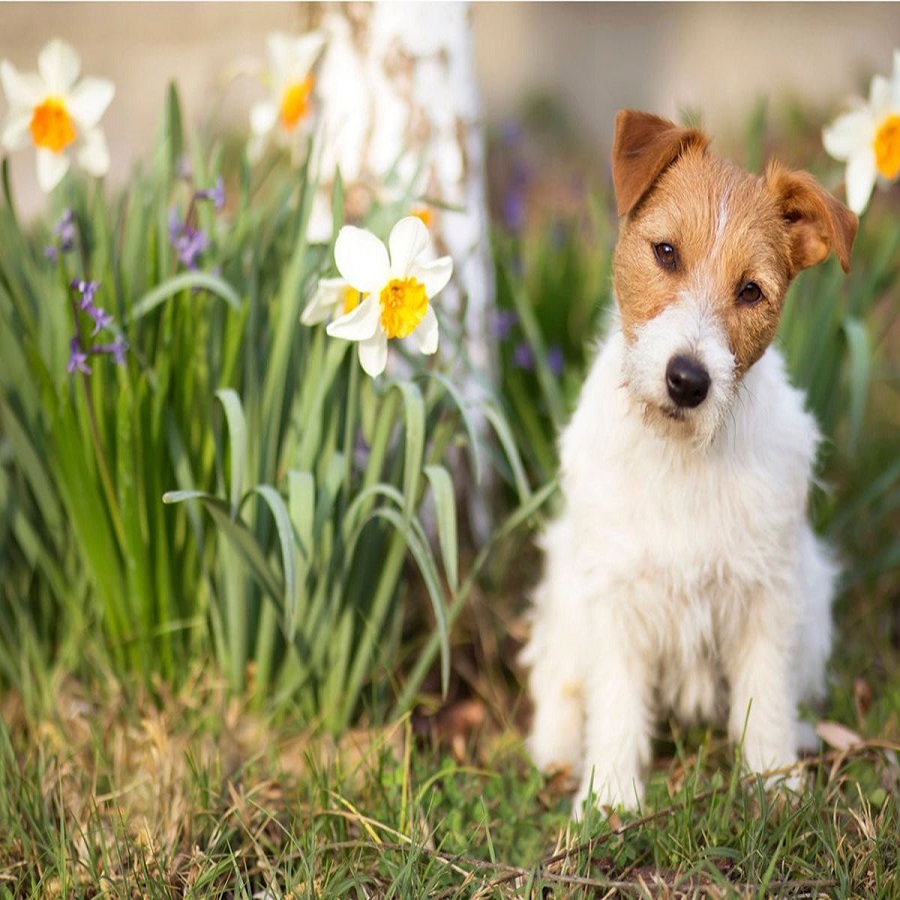Dogs can be curious and sometimes destructive when it comes to flower pots. Whether it’s digging up plants, chewing on leaves, or simply using the pots as a makeshift bathroom, keeping dogs away from flower pots can be a real challenge. In this article, we will explore effective strategies to prevent dogs from causing havoc in your garden. From physical deterrents to behavioral training, we’ll cover a range of methods to protect your plants and ensure a harmonious coexistence with your furry friends.
Understanding Why Dogs are Drawn to Flower Pots
Dogs’ Natural Instincts and Curiosity
Dogs are inherently curious creatures. They use their sense of smell and taste to explore their environment. Flower pots, with their rich soil and interesting scents, can be particularly enticing to dogs. They might dig in the pots to find hidden treasures, or they may simply be drawn to the earthy smell. Understanding this natural curiosity is crucial in finding ways to keep them away from your plants.
The Role of Scent and Texture
The texture and smell of potting soil can attract dogs. Some dogs are drawn to the smell of fresh soil, which may mimic the scents they encounter in nature. Additionally, the texture of the soil can be appealing for digging and pawing. By identifying these attractions, you can tailor your deterrent strategies to address the specific aspects that are enticing to your dog.

Physical Barriers to Prevent Access
Using Decorative Fencing
One of the simplest and most effective ways to keep dogs away from flower pots is by installing decorative fencing around your garden beds. Small, attractive fences not only enhance the aesthetics of your garden but also serve as a physical barrier to prevent dogs from accessing the pots. Choose fences that are tall enough and have small gaps to ensure that dogs cannot squeeze through.
Creating Raised Beds
Raised garden beds can be a practical solution for keeping dogs away from flower pots. By elevating your plants, you reduce the dog’s ability to reach them. Raised beds also offer the advantage of better drainage and easier access for gardening. Ensure that the edges of the raised beds are sturdy and high enough to deter even the most determined dogs.
Repellent Methods to Dissuade Dogs
Utilizing Citrus and Vinegar
Citrus and vinegar are known to be natural repellents for dogs. The strong smells of lemon, orange, and vinegar can be unpleasant to dogs and may deter them from approaching your flower pots. You can create a solution by mixing equal parts of water and vinegar or citrus juice and spraying it around your pots. Reapply regularly, especially after rain, to maintain the deterrent effect.
Employing Commercial Dog Repellents
There are various commercial dog repellents available that are specifically designed to keep dogs away from certain areas. These products often use scents or tastes that dogs find unpleasant. Look for repellents that are safe for plants and follow the manufacturer’s instructions for application. These repellents can be effective when combined with other deterrent methods.
Training and Behavioral Modification
Positive Reinforcement Training
Training your dog to avoid flower pots can be highly effective if approached with patience and positive reinforcement. Teach your dog basic commands such as “leave it” or “no” and reward them with treats and praise when they obey. Consistent training will help your dog learn to associate staying away from the pots with positive outcomes.
Redirecting Attention
Another training strategy involves redirecting your dog’s attention to more appropriate activities. Provide your dog with engaging toys and activities that can keep them occupied and less interested in the flower pots. Regular exercise and mental stimulation can reduce the likelihood of your dog seeking out the pots as a source of entertainment.

Enhancing the Garden Environment
Using Dog-Friendly Plants
Consider planting dog-friendly plants that are less likely to attract or irritate your pet. Certain plants, such as marigolds, lavender, and rosemary, are less appealing to dogs and can serve as natural deterrents. Additionally, incorporating these plants into your garden can provide a pleasant aroma and create a visually appealing landscape.
Implementing Mulch and Gravel
Using mulch or gravel around your flower pots can be an effective deterrent. Dogs often dislike walking on certain textures, and rough or crunchy surfaces can discourage them from approaching the pots. Choose mulch or gravel that complements your garden design while providing an unpleasant surface for your dog.
Creating a Designated Play Area
Establishing a Separate Dog Zone
Creating a designated play area for your dog can help keep them away from your flower pots. Design a space in your yard where your dog can play, dig, and explore without interfering with your plants. Ensure that the play area is engaging and equipped with toys and other activities to keep your dog entertained.
Using Enclosures and Playpens
If you have limited space, using a dog enclosure or playpen can be an effective way to manage your dog’s access to flower pots. These enclosures provide a contained area where your dog can enjoy themselves while protecting your garden. Look for enclosures that are easy to set up and move, allowing you to adjust the area as needed.
Regular Maintenance and Monitoring
Checking for Damage and Adjusting Strategies
Regularly inspect your flower pots and garden area for signs of damage or wear. If you notice that your deterrent methods are not working as effectively as before, make adjustments as needed. This may involve repositioning barriers, reapplying repellents, or updating training techniques.
Observing Your Dog’s Behavior
Pay attention to your dog’s behavior and responses to different deterrents. Dogs may become accustomed to certain methods over time, so it’s important to stay vigilant and adapt your strategies to maintain their effectiveness. Monitoring your dog’s behavior can help you identify new patterns and adjust your approach accordingly.

Combining Multiple Strategies for Optimal Results
Integrating Barriers and Repellents
To maximize the effectiveness of your efforts, consider combining physical barriers with repellent methods. For instance, using both a decorative fence and a citrus-based spray can create a multi-layered deterrent system. The fence physically prevents access, while the repellent provides an additional layer of discouragement. This combination can be particularly effective for more persistent dogs who might otherwise bypass a single deterrent.
Rotating Repellent Scents
Dogs can sometimes become accustomed to specific scents over time, reducing their effectiveness. To combat this, rotate different types of repellents to keep your dog from getting used to any one scent. For example, alternate between citrus sprays, vinegar solutions, and commercial repellents. This variation can help maintain the deterrent effect and keep your dog from becoming desensitized.
Enhancing the Aesthetic Appeal of Deterrents
Decorative Solutions for Dog Deterrence
Incorporate aesthetically pleasing deterrents that complement your garden’s design. For example, you can use decorative rocks or pebbles around your flower pots that also serve as a deterrent. The added texture can discourage digging, while the decorative elements enhance the garden’s visual appeal. By integrating deterrents into your garden’s design, you can achieve both functionality and style.
DIY Garden Art and Deterrents
Consider creating DIY garden art that also functions as a deterrent. For instance, you can make colorful garden stakes or sculptures that are both eye-catching and effective at keeping dogs away. These handmade pieces can add a personal touch to your garden while serving as a visual and physical barrier. Engaging in creative projects can also be a fun way to address the challenge of keeping dogs away from your flower pots.
Conclusion
Keeping dogs out of flower pots requires a combination of physical barriers, repellent methods, training, and environmental adjustments. By understanding why dogs are drawn to flower pots and implementing effective strategies, you can protect your plants and create a harmonious garden environment. Remember that patience and consistency are key when training your dog and maintaining deterrents. With the right approach, you can enjoy a beautiful garden while ensuring that your furry friends stay out of your flower pots.
